Two different fabrics may be used for the same events, but that doesn't mean they are exactly the same. The preference and taste of the user is a factor in choosing which fabric to use. Because of this, one may prefer a special kind of fabric for their special day while others prefer to use a different material.
One of the main distinctions between the tulle and chiffon is that the latter is used commonly as a fabric due to its lightweight feature and great drape, while the former, tulle, is typically used as an accessory of clothing due to its mesh type appearance.
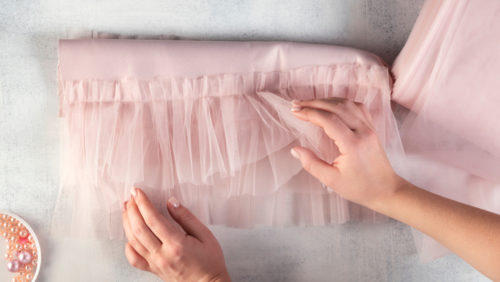
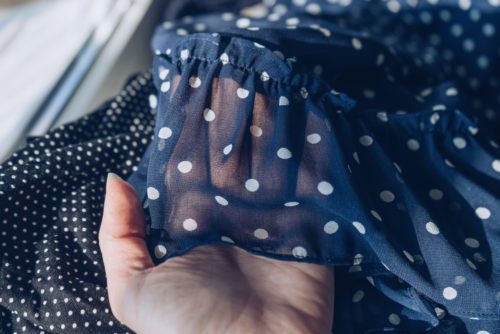

If you're interested to know more about these fabrics, continue to read below.
6 differences between chiffon and tulle
1. Composition
Tulle is mostly made out of cotton, silk, polyamide, wool, lurex, and polyester, while chiffon is typically made out of polyester, nylon, or silk.
2. Drape
Tulle fabric is firmer than the chiffon fabric. On the other hand, chiffon has a more flowy look and drapes well.
3. Style
In terms of style, tulle is more of a mesh while chiffon has a smooth and slippy fabric. Both fabrics are lightweight.
4. Breathability
The breathability of the tulle and chiffon is excellent since both these fabrics breathe well.
5. Durability
In terms of durability, the tulle fabric is sturdier than chiffon but not as sturdy as cotton. On the other hand, Chiffon fabric is vulnerable and delicate, thus making it easy to ruin or crumple.
6. Usage
Chiffon is commonly used for formal dresses and wedding gowns while tulle is mostly used for veils, tutus, or other accessories.
Chiffon vs. Tulle – As a Wedding Dress
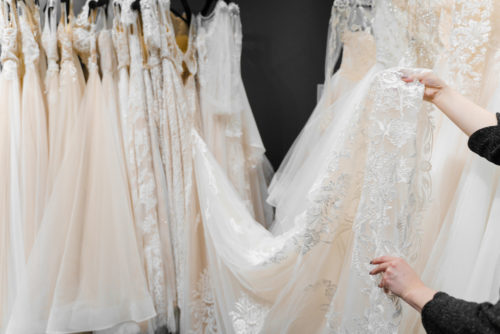

Your preference, taste, as well as how you picture yourself on your wedding day are great factors in choosing the type of fabric you'll use for your wedding gown. Chiffon is a better choice if you prefer a flowy look due to its lightweight and nice drape. It is also soft and fluid, unlike the tulle fabric. Unfortunately, chiffon is quite see-through; thus a lining is necessary behind it.
Since tulle is firmer than chiffon, it can hold your gown's fullness better than the chiffon fabric. It is also flexible because of its mesh-type appearance and lightweight feature.
Tulle also keeps the body cool even during the most stressful events, making it better for warm weather. Chiffon doesn't wrinkle easily, but the downside is, it frays easily.
Due to the smooth and slippery fabric of chiffon, it is hard to sew it and make alterations. Fortunately, its lightweight feature and sheer or semi-transparent style make it perfect to wear during scorching hot days for reception and wedding halls.
Chiffon vs Tulle – As a Veil
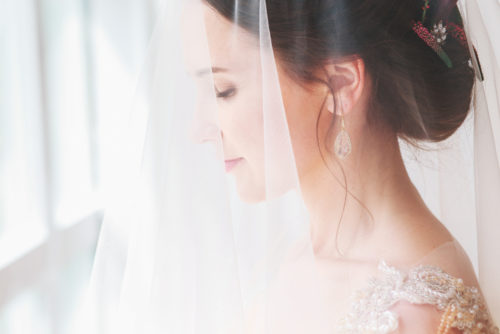

The magnificent bride will decide whatever kind of fabric to use for her veil for her big day. The softness of the chiffon veil made of silk fabric is best suited if the bride wishes to highlight her desirable figure. On the other hand, a silk tulle, a less opaque fabric than chiffon, is selected more often as a veil fabric by brides. It can come into different varieties; it may be soft and nice sheer or opaque version. If you want to add some fancy lace to your veil, this fabric is a good option. In addition, if you are looking for a more durable veil to keep for the next generation, tulle is highly recommended, although extra care is still needed if you want to keep it.
Despite the price, it may be difficult for you to decide which veil fabric you choose to wear. These two highly exceptional fabrics come in different styles: polyester, rayon, cotton, and nylon. You can choose whatever you want depending on your budget. You just need to make sure that the fabric you'll choose will make you stand out and make you feel more beautiful and at the same time comfortable on your wedding day.
What are the fabrics that are similar to Tulle?
One fabric similar to tulle in terms of bridesmaid dresses and wedding gowns is the organza fabric – more firm than chiffon. It is used several times as a stuffing for sheer fabrics.
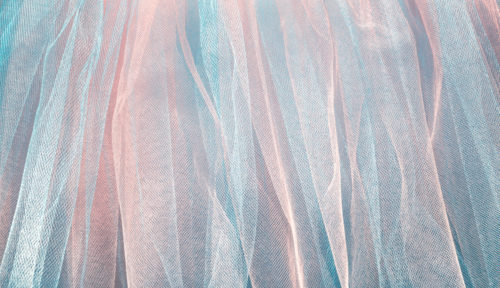

However, you must also consider if you will make a lot of movement during the event of your wedding day. Since organza is stiffer than tulle, it is not that versatile and not that stretchable. If that's the case, you might prefer using tulle instead.
Another similar fabric is the bobbinet which was made in France and England in 1808. (See a beautiful selection HERE on Etsy.)
Fishnet, on the other hand, is similar to tulle too but a lot rougher. Adding to the list is Maline, a type of fabric with a diamond-like shape netting that is made from high-quality material. Crinoline also made its way on the list and is commonly used for layered petticoats.
For millinery veils, point d'espirit fabric with embroidered dots is frequently used.
You can also encounter Russian and French net that have six-sided holes (Russian has larger holes). Lots of choices for the wedding day!
Summary
In summary, there are only minor differences between chiffon and tulle except for the chiffon's smooth and slippery characteristics. Both are ideal to wear even on scorching hot days for the coolness they provide. However, one must remember to choose carefully the type of fabric they want to use depending on their preference and taste to look good and feel good on their wedding day.








Great article. THanks!